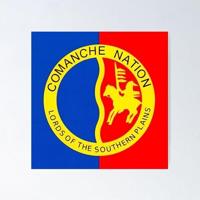I grew up on the edge of the dust bowl just before you enter the three counties of the Oklahoma Panhandle, Beaver, Texas and Cimarron — before statehood, the infamous “No Man’s Land.” It was infamous again during the “dirty thirties” when drought and erosion centered in the Oklahoma and Texas panhandles. Settlers dealt not only with the Great Depression but also with years of drought.
The Dust Bowl got its name after Black Sunday, April 14, 1935, when a mountain of blackness swept across the High Plains and instantly turned a warm, sunny afternoon into a horrible blackness.
I was only 6 years old on Black Sunday but I remember it vividly. My parents had left me home alone while they went to visit relatives 12 miles away for a couple of hours. When it started getting dark mid-afternoon, I went outside to see why. The western sky was filled with a monstrous, broiling cloud which I thought was a tornado, scaring me to death. Just then, my parents came barreling up, grabbed me and we ran to the cellar and slammed down the wooden door.
So when I read a book for a discussion series at the library, “The Worst Hard Times; Oklahoma in the Dust Bowl Years” those memories came roaring back, much like that dust storm itself. The book is “Out of the Dust” by Karen Hesse — a short novel for young readers which won the Newberry and nine other awards. The author did research at the Oklahoma Historical Society but found her best source in the Boise City News. Boise City is the county seat of Cimarron County.
I knew those people she wrote about. The neighbors who came to help. The teacher who let a starving, frightened family on their way west stay in the school until their baby was born. The students who brought fixings for soup and put in a big pot to simmer. The lost hopes when wheat is planted but is blown away or withers. A boy walking to California asking for food for work and sent on with a bath, haircut and clean mended overalls. The sheriff who broke up a still but gave the 1,000 pounds of sugar to the teacher to bake for the kids.
The narrator is Billie Jo who is 13 on their poor, dust-ravaged farm when the story begins in the Oklahoma Panhandle in 1934.
She talks about her pregnant mother stirring biscuits. I remember that. Her mother died in childbirth. Mine died just before. She had a devastated father; so did I. She remembers state school tests, an impoverished community raising $33 for infantile paralysis, community competition on stage for entertainment. She won $1 for 3rd place. I won 50 cents. Her father found another woman who was a good cook. My father found another woman who was a good cook. “She doesn’t say what I should do,” Billie Jo said. Neither did my stepmother.
By then, I am crying so hard I have to stop reading and wipe my eyes.
“The way I see it,” Billie Jo ends the story, “hard times aren’t only about money or drought or dust. Hard times are about losing spirit, and hope, and what happens when dreams dry up.”
Mary McClure is a former newspaper editor who lives in Lawton.
Want to reach a local audience and grow your business?
Our website is the perfect platform to connect with engaged readers in your local area.
Whether you're looking for banner ads, sponsored content, or custom promotions, we can tailor a package to meet your needs.
Contact us today to learn more about advertising opportunities!
CONTACT US NOW




